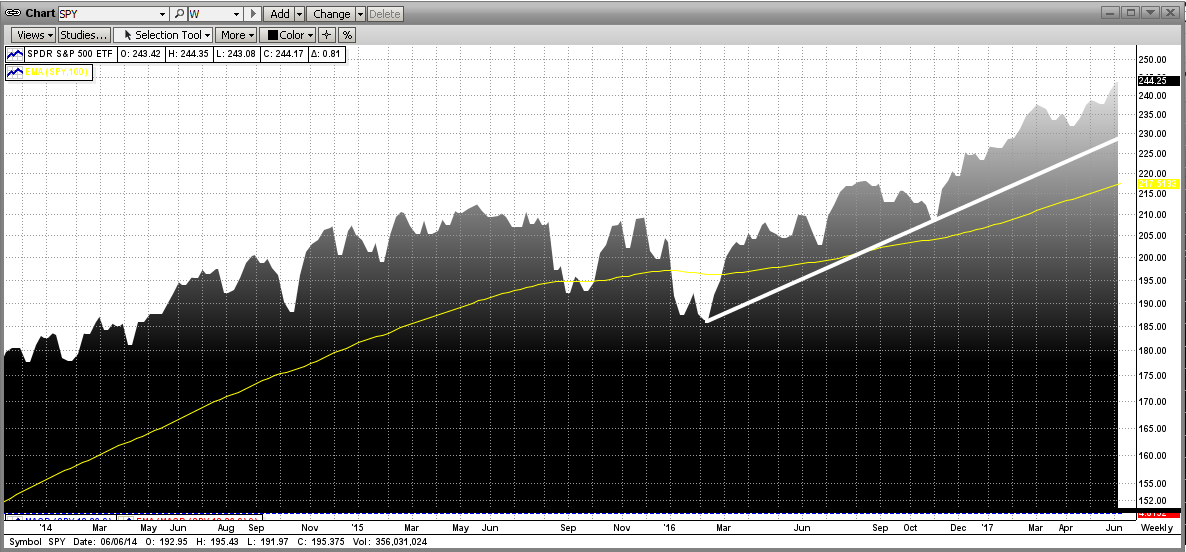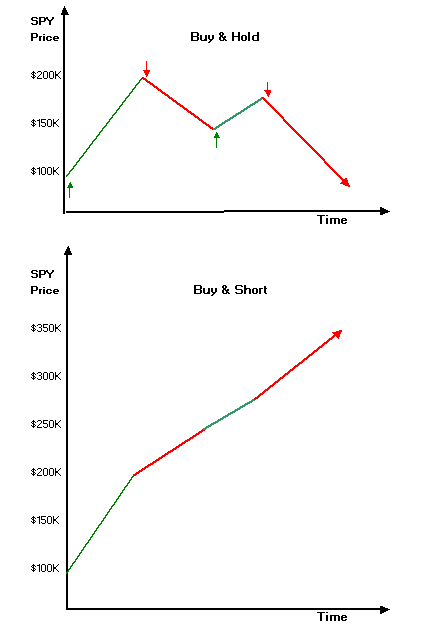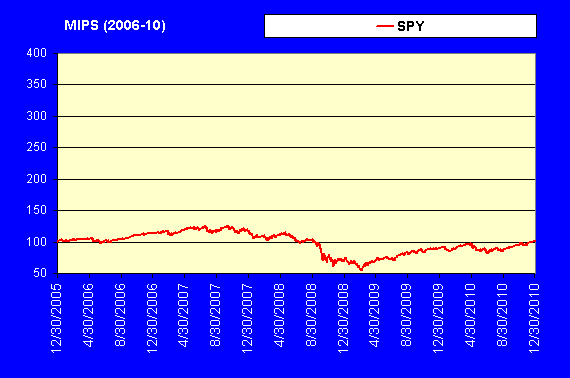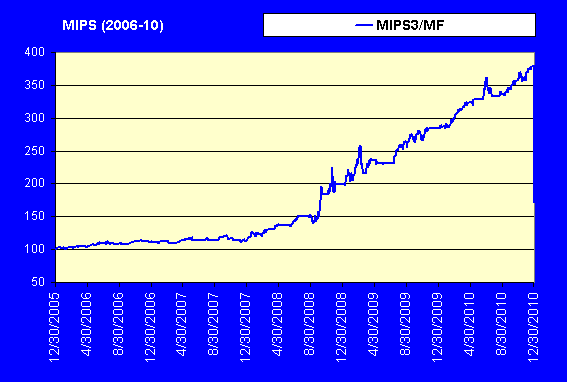It seems like all investors are getting very jittery about the recent market rally. And, it seems like some MIPS members are crying for a signal change. Why, because somehow they think if you trade a lot, you will do better. In most cases (like now), the opposite is true. There is no reason for a timing model to turn "investors" (who want to ride the trend) into "traders" (who want to attempt to make money on every blip in the market and end up getting whipsawed).
That is especially true at this time, when the "trend" is up-up-up !!! - See graph below...
- BE HAPPY THAT YOUR MIPS TIMING MODEL IS KEEPING YOU LONG NOW !!!

COMPOUNDING EFFECT OF LONG/SHORT TRADING IN DOWN MARKETS !!!
Good timing models should keep you Long in up markets and Short or Cash in down markets.
PLEASE remember that, if you trade an index fund (like SPY) and the market goes up for 8 or 10 or 15 months, and your model keeps you Long, your performance will be equal to (or close to equal) that of the index. One way to "better this" is to trade with a little leverage on Long signals (like 1.25x of 1.5x) and with no leverage on Short signals.
If you have a good stock market timing model (like MIPS) to tell you when to buy or short, and if you change your trading strategy from buy/hold to buy/short, you will most likely GREATLY improve your long-term investment performance. The reason, of course, is that you will be Long in up markets (making money) and Short in down markets (making money). In other words, you should make money in both up and down markets. Even though that might sound like "magic" to the average investor, the fat cats have been enjoying this type of trading (and the resulting performance) for over 100 years. They call it "Hedging".
OK, so how does buy/short actually work? Well, first you need a good stock market timing system (like MIPS3 or MIPS4) to tell you when the stock market is headed up and when it is headed down. Then, you simply need to be in long positions when the stock market is going up; and either out of the market or in short positions when the stock market is going down (simply following the MIPS Signals). That is a relatively safe market trading strategy if your timing model is a good one.
Hypothetical
Show me !!!
OK, let's look at a sample chart of stock market movements and how you would make money with the buy/short strategy. Below is how the buy/short strategy would work in a perfect world. Of course, stock market timing systems like MIPS are not perfect, but they are much, much better that going it alone.
Sample Market Performance (like in 2000-2010)

In the graphs immediately below, buy/hold & buy/short strategies would have resulted in the values at each breakpoint of those in the tables immediately below. You can see that at every breakpoint, the SPY value with buy/short "ratchets" up by being long when the market is going up, AND by being short when the market is headed down. BTW, in this hypo-example, buy/short would have grown to $350K instead of basically ending up "flat" (no gain).

------------------------------------------------------------------------------------------------------------------------------
REAL MARKET Performance With MIPS3 (trading in 2006-2010)
Real Life Performance Using the MIPS3 Long/Short Strategy
Does the hypothetical "Buy & Short" graph above seem unbelievable? Do you doubt that this could happen in real life? It not only can, it did happen in 2000 and in 2008 (and it will happen again). For a real-life view of how MIPS performed in 2008, let's look at the period between 2006 and 2010 (using MIPS3 verified signals for this time frame from TimerTrac.com).
Buy/Hold SPY (1st Graph Below)
In this time period, the SPY
- started with $100,000,
- grew by about 27% to $127,000,
- took a nose-dive in 2008 of over 50% to $60,000,
- and grew back to where it started ($100,000) by the edd of 2010.
Big deal, 5 years and you would have ended up where you started (ie, you would not have made a penny).
Buy/Short SPY (with MIPS3) (2nd Graph Below)
The numbers in the 2nd chart below are real numbers trading with the MIPS3 buy/short strategy, using signals verified by TimerTrac.com. During the period between 12/30/2005 thru 12/31/2010, your portfolio that started at $100,000 would have grown steadily (almost no dips) over this five year period to $379,000 at the end (for a GAIN of 279%) !!! AND THAT IS REAL !!!


THE MORAL OF THE STORY IS:
Trading long/short effectively means that you invest with the market when it is going up and you invest AGAINST the market when it is going down (making money in down markets). Trading buy/hold means that you invest with the market when it is going up AND also with the market when it is going down (losing money in down markets)
Best Wishes !!!
Paul Distefano, PhD
CEO / Founder
MIPS Timing Systems, LLC
Houston, TX
281-251-MIPS(6477)
www.mipstiming.com
support@mipstiming.com